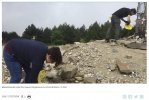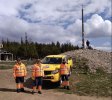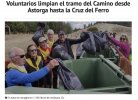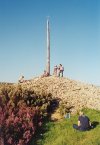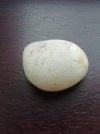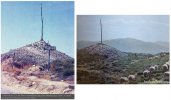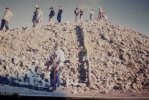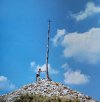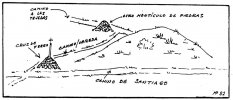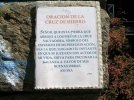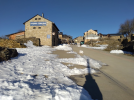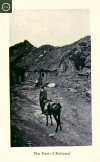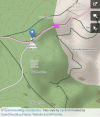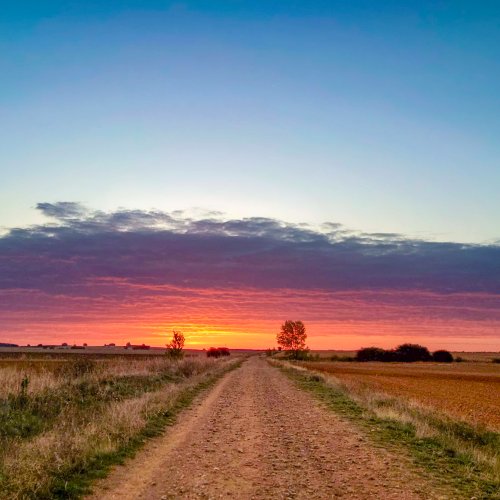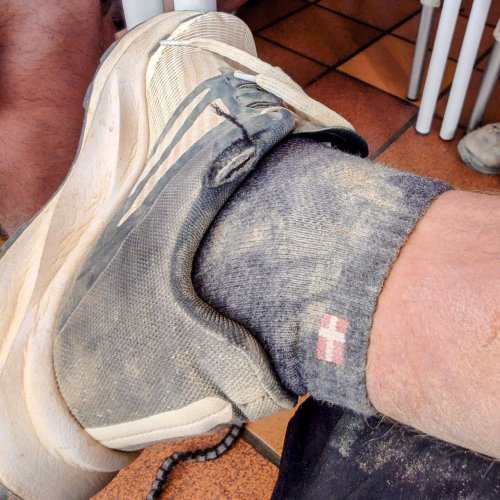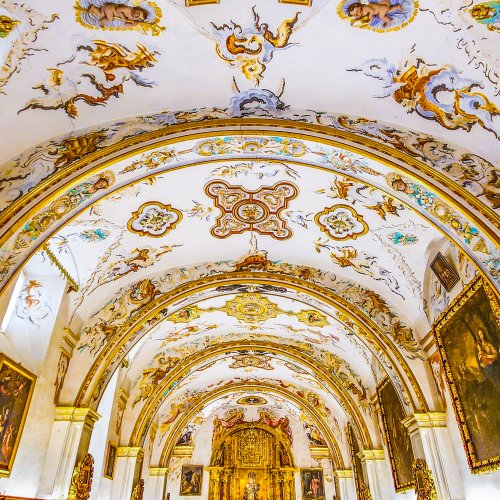Georgiana Goddard King is mentioned in another current thread which caused me to look up again her description (if any) of the Cruz de Ferro site in her book
The Way of Saint James Volume 2. Goddard King was a specialist in medieval history, especially for Spain, and explored the Way of Saint James in Spain and what was then known about its history. The book was published in 1920. She was also a photographer. She is familiar with older authors who wrote about the Road and frequently quotes them where relevant.
She makes no mention of a tradition of pilgrims bringing stones from home. She does not even mention that the Iron cross stands on a huge heap of stones. Below are some relevant passages. Btw, Francisco is a local from Ponferrada who provided the mules for the journey and accompanied her party on this section of her journeys; they travelled eastwards from Ponferrada to Astorga:
The road [leaving Molinaseca] was the loneliest ever, a few carts, drawn by small black oxen, creaking on the track that was sometimes gullied clay, sometimes rolling stones but chiefly living rock deep-furrowed [...]. At Riego [de Ambros], the earthen-coloured houses stood, their thick thatch overgrown with moss and stone-crop, wavering in and out of the line of the street [...]. The houses of Manjardin were slated, bright with flat patches of stone-crop [...]. By now we were high on the moor, following along the vast side of the range, among white heather and acrid juniper and fragrant rosemary [...]. Scrub oak was sparse here, and pines we saw but rarely throughout the day [...]
The Port [mountain pass] is not like a Swiss col, a sharp scramble up and a steep descent, but wide and heaving like a strait in the sea: the road turns a little, and rises and falls again [...] Miles ahead, Francisco pointed out the cross that stood in the Port and anon, by straining eyes we saw, where the sharp crests dipped, the thin line of the iron cross, like a semaphore station. [...] We lunched in the town of Foncebadón, sitting on a bench, at a table, under the vaulted entrance to a stable.
Despite ample quotes from earlier authors who wrote about this Monte Irago area, its donations, its hospitals, and its churches and despite her vivid description of landscapes and monuments and people, this is all there was to say of the Cruz de Ferro. No mention of stones, of any known traditions, no references to it being a holy place or a sanctuary or a place of special interest.
I was excited to see that there is a
photo of The Pass of Rabanal in this book. Alas, her photo shows what I think is the main street of Foncebadon at the time and some houses. BTW, I think contemporary pilgrims are quite happy that the street is not, and was not in previous decades, as authentic as it was around 1920.








